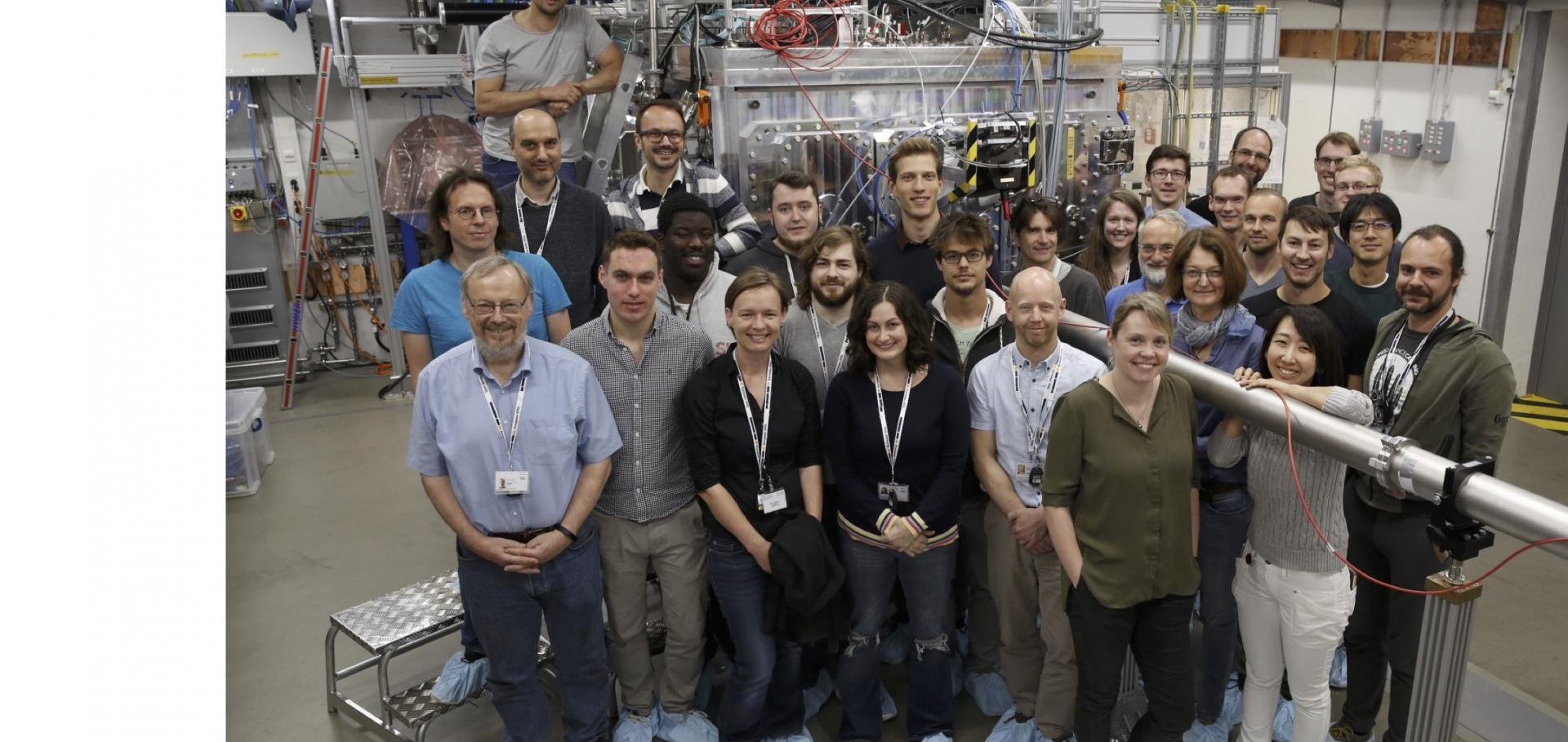Ultra-fast x-ray diffraction studies of the phase transitions and equation of state of scandium shock-compressed to 82 GPa
Physical Review Letters American Physical Society 118:2 (2017) 025501
Abstract:
Using x-ray diffraction at the LCLS x-ray free electron laser, we have determined simultaneously and self-consistently the phase transitions and equation-of-state of the lightest transition metal, scandium, under shock compression. On compression scandium undergoes a structural phase transition between 32 and 35 GPa to the same bcc structure seen at high temperatures at ambient pressures, and then a further transition at 46 GPa to the incommensurate host-guest polymorph found above 21 GPa in static compression at room temperature. Shock melting of the host-guest phase is observed between 53 and 72 GPa with the disappearance of Bragg scattering and the growth of a broad asymmetric diffraction peak from the high-density liquid.Atomic processes modeling of X-ray free electron laser produced plasmas using SCFLY code
ATOMIC PROCESSES IN PLASMAS (APIP 2016) 1811 (2017) ARTN 020001
Simulations of the inelastic response of silicon to shock compression
Computational Materials Science Elsevier 128 (2016) 121-126
Abstract:
Recent experiments employing nanosecond white-light x-ray di↵raction have demonstrated a complex response of pure, single crystal silicon to shock compression on ultra-fast timescales. We present here details of a Lagrangian code which tracks both longitudinal and transverse strains, and successfully reproduces the experimental response by incorporating a model of the shock-induced, yet kinetically inhibited, phase transition. This model is also shown to reproduce results of classical molecular dynamics simulations of shock compressed silicon.Measurements of continuum lowering in solid-density plasmas created from elements and compounds
Nature Communications Nature Publishing Group 7:1 (2016) 11713
Abstract:
The effect of a dense plasma environment on the energy levels of an embedded ion is usually described in terms of the lowering of its continuum level. For strongly coupled plasmas, the phenomenon is intimately related to the equation of state; hence, an accurate treatment is crucial for most astrophysical and inertial-fusion applications, where the case of plasma mixtures is of particular interest. Here we present an experiment showing that the standard density-dependent analytical models are inadequate to describe solid-density plasmas at the temperatures studied, where the reduction of the binding energies for a given species is unaffected by the different plasma environment (ion density) in either the element or compounds of that species, and can be accurately estimated by calculations only involving the energy levels of an isolated neutral atom. The results have implications for the standard approaches to the equation of state calculations.Inelastic response of silicon to shock compression.
Scientific reports Nature Publishing Group 6 (2016) 24211


